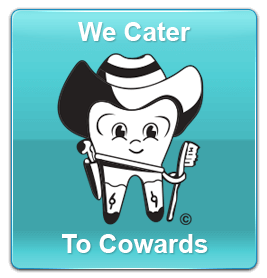Laser Dentistry
What Is Laser Dentistry?
What Is Laser Dentistry?
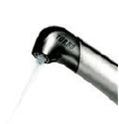
The idea of laser dentistry sounds like a dream come true! After all, that would mean a little light would make things right and you wouldn’t have to listen to that noisy drill, right?
Not exactly.
While for many years now we have used a laser in our office to diagnose deep pit dental decay and to help heal canker and virus sores, the recent advances in laser technology now allow us to increase your comfort level and treatment options. When a laser can be used to help treat a specific dental problem, the new soft-tissue (gums) and hard-tissue (bone and tooth cutting) dental lasers have some distinct advantages and patient benefits over other methods of treatment.
Is It Safe?
Lasers have been used in dentistry since 1990.
Our WaterLase® was first cleared by the US Food and Drug Administration (FDA) to cut tooth structure in 1998, and since that time it has received numerous additional clearances from the FDA for a wide range of procedures on teeth, bone and gum tissue.
The amount of energy generated to treat a given clinical situation is very specific. Sometimes the energy emitted is not much more than a laser pointer, all the way up to several watts of power which can be focused to cut the hard enamel of your tooth.
In our office, we practice strict safety standards when using lasers and everyone must wear special glasses. In no cases will the laser make a deep or accidental cut because the energy is highly focused right at the tip, and actually cuts much slower than a scalpel.
So there is no need to worry. We always show and demonstrate our laser equipment to patients before we use it. Even children quickly see and understand that there is nothing to be afraid of. By the way, I have personally been treated with laser, and it was A-OK!!
What Are The Benefits of Laser Dentistry?
Are Lasers Replacing Drills?
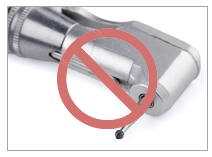
Your first thought might be, “Oh boy, no more drills!”
However ...
Dental lasers, that is “hard-tissue” dental lasers, can be used to prepare teeth for the filling of cavities just like a drill.
But the standard air turbine drill, developed in the 1950’s, is still the major tool in use because it is so versatile. We still need it when removing old fillings and larger cavities, and in preparing teeth for crowns and bridges.
Anesthetic is nearly always needed for these procedures, but dental lasers can often reduce or eliminate the need for “shots.” That means less or no numbness after your dental visit.
The laser light energy also helps kill bacteria in cavity preparation. It is especially useful for cavities located at the gum line or on the tooth root because, as it cuts, it seals up tiny blood vessels in the gums, unlike the drill.
So what’s the bottom line? Lasers can mean less or no “shots”, less bleeding and no drill noise … if your treatment can be performed using a laser.
How Are Lasers Used In Periodontal (Gum) Treatment?
One of the main uses of the soft tissue dental laser is as an adjunctive aid in periodontal treatment.
When gum disease is present in the mouth, bacteria can build up in the pockets between the gums and tooth roots. Their toxins cause bone destruction. This can lead to loosening of the teeth which ultimately leads to tooth loss if the bacterial infection isn’t handled.
But lucky for us, bacteria prefer darkness and do not like light — especially bright, high energy light! This is why the laser can be used to reduce the bacterial count in a periodontal (gum) pocket almost to a level of sterilization.
Also, it can remove unwanted inflamed gum tissue in the area, and help seal blood vessels and nerves.
As a result, surgical procedures are more bloodless and healing is generally quicker and more pain-free. But most importantly, adding laser light deep in periodontal pockets, along with the usual mechanical and chemical treatment, can enhance the attachment of the teeth to the surrounding bone, thereby lessening the chances of tooth loss.
Afterall, you keeping your teeth is our ultimate goal!
How Are Lasers Used In Root Canal Treatment?
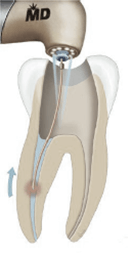
Root canal treatment requires careful cleaning and sealing of the internal canal systems of an infected tooth, where the nerves and blood vessels once were.
The problem is, it is extremely difficult to clean and seal so many canals and microscopic tubules where bacteria can lodge and cause problems. In fact, most failures of root canal treatment are from this one factor.
So in our office, before the root canal is sealed, laser energy, via a specially designed radial laser tip, is passed deep to the root tip and radiated outward to all areas as much as possible, to kill these hiding bacteria.
While long term studies are not available to substantiate the effectiveness of this, it is still reasonable to surmise that this may help due to the antibacterial properties of laser energy.
How Do Lasers Remove Decay?
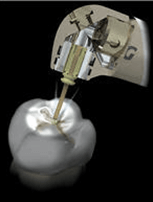
For decay removal, we are using an FDA-approved Waterlase® that uses laser energy in conjunction with a water mist that accomplishes vaporization (ablation) of decay. This particular laser wavelength is attracted to and excites water molecules.
Since decay has water in its content, it can be excited to an extent of vaporization (ablation). Various power settings are used with varying amounts of water mist. It’s really a very gentle procedure and does not require anesthesia in most cases.
How Are Lasers Used During Oral Surgery?
The fact is lasers can be used to cut any soft-tissue in the mouth that a scalpel is used for. We are using an FDA-approved Waterlase® that uses laser energy in conjunction with a water mist that accomplishes vaporization (ablation).
When the laser tip is focused where needed over the soft tissue, it appears to cut similar to a scalpel. It’s really a very gentle procedure and does not require anesthesia in most cases.
In our office, we frequently use a laser for gum (periodontal) surgery, wisdom teeth surgery, cosmetic recontouring of gum tissues, removal of cysts or tumors and muscle attachment (frenum) removal, just to name a few.
We have found that using the laser for these surgical procedures provides the added benefits of laser anesthesia, less bleeding and less post-operative pain, generally with quicker healing due to the gentler nature of the laser light.
FAQ About Laser Dentistry
Why can’t you use the laser for my cavity?
Lasers can’t be used for all cavities. Some areas are so deep or around corners, it is best to use the drill. Also enamel is very hard and can be removed with a laser, but it is slow. The drill can really speed things up on that type of situation.
